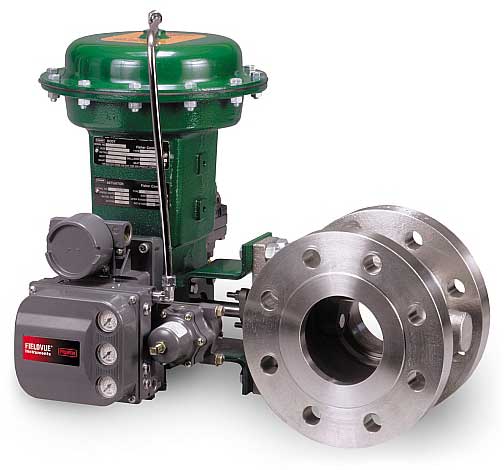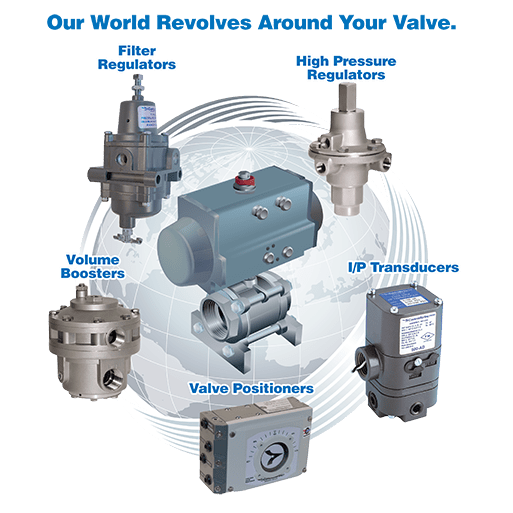Enhancing Operational Effectiveness with Advanced Control Valves
Wiki Article

Maximize Energy Cost Savings and Convenience With Advanced Structure Automation Controls
In the world of modern-day style and facility administration, the assimilation of advanced building automation manages stands as a pivotal advancement. By using the power of automation, structures can adapt, react, and evolve in means that were once unimaginable.Power Performance Advantages
Power efficiency benefits can significantly minimize energy usage and functional prices in buildings. By implementing energy-efficient techniques and innovations, building proprietors and drivers can achieve significant financial savings while also contributing to ecological sustainability. One of the main benefits of boosting power efficiency in buildings is the reduction of utility bills. Energy-efficient systems, such as sophisticated structure automation controls, can maximize using resources like cooling, lighting, and heating, causing reduced energy costs gradually.Furthermore, improved power effectiveness can prolong the life expectancy of building devices and systems. By operating a lot more effectively, HVAC systems, lighting components, and other structure elements experience much less deterioration, resulting in lowered maintenance and substitute costs. In addition, energy-efficient buildings commonly command greater home values and rental prices, offering lasting monetary advantages to proprietors.
Moreover, energy performance can improve resident convenience and efficiency. Correctly controlled indoor settings with optimal lights and thermal conditions produce an even more favorable and pleasant office, leading to enhanced worker complete satisfaction and efficiency. On the whole, the energy effectiveness advantages related to advanced building automation controls are multifaceted, including price financial savings, environmental stewardship, and resident wellness.
Improved Comfort Control
Enhancing convenience control in building environments calls for an advanced combination of innovative automation systems for ideal resident health. By using advanced structure automation controls, facilities can customize the interior environment to satisfy the particular demands and preferences of occupants. control valves.By including these innovative controls, buildings can not only improve convenience but likewise enhance power performance by optimizing system operations based on real tenancy and use patterns. Inevitably, focusing on owner convenience via innovative automation systems leads to a more enjoyable and healthier indoor environment.
Operational Effectiveness Improvements

Furthermore, the implementation of real-time surveillance and analytics tools makes it possible for structure operators to recognize energy inefficiencies and functional anomalies immediately. By continuously keeping track of power use patterns and system performance metrics, modifications can be made in real-time to optimize energy intake and guarantee peak functional effectiveness. control valves. In addition, integrating need reaction approaches into structure automation controls can even more boost functional efficiency by dynamically changing energy use based on grid problems and pricing signals
Indoor Environment Optimization
Efficient interior climate optimization is an essential aspect of structure automation controls, guaranteeing occupants' convenience and well-being while optimizing energy cost savings. By making use of advanced sensing units and controls, constructing automation systems can continuously check and change temperature, humidity levels, air high quality, and air flow to develop an optimal indoor atmosphere. Preserving constant and comfy conditions not just improves passenger complete satisfaction however likewise improves productivity and overall well-being.Interior environment optimization additionally plays an essential role in energy efficiency. By fine-tuning cooling, home heating, and air flow systems based on real-time information and tenancy patterns, developing automation controls can dramatically minimize energy consumption - control valves. For instance, applying methods such as demand-controlled ventilation and thermal zoning can help decrease power waste while guaranteeing that each area of the structure gets the necessary conditioning.

Lasting Atmosphere Creation
Building automation manages not just enhance interior climate problems for energy performance and passenger convenience however also lay the structure for creating a sustainable setting with critical administration of systems and resources. By incorporating sophisticated structure automation technologies, such as sensing units, actuators, and intelligent software, centers can keep an eye on and adjust energy usage in real-time to decrease waste and reduce their carbon footprint. These systems make it possible for predictive maintenance, determining possible issues before they intensify and maximizing tools performance to improve long life and efficiency.Furthermore, lasting environment development expands beyond power administration to incorporate try this out water preservation, waste reduction, and indoor air top quality improvement. Building automation controls can site web control water use, spot leaks, and make certain proper waste disposal techniques, adding to total sustainability efforts. Furthermore, by keeping an eye on and managing ventilation and filtration systems, these technologies enhance occupant health and productivity while reducing energy consumption related to heating and cooling operations.
Final Thought
In verdict, advanced structure automation regulates deal substantial advantages in terms of energy savings, convenience control, functional effectiveness, indoor environment optimization, and developing a lasting setting. By carrying out these controls, buildings can achieve optimal efficiency while minimizing energy consumption and improving passenger comfort. It appears that the usage of advanced automation technology is critical in improving structure efficiency and creating an extra sustainable future.Power effectiveness benefits can significantly lower energy intake and operational prices in buildings. Overall, the power efficiency advantages associated with innovative building automation controls are diverse, encompassing price savings, ecological stewardship, and resident health.
In addition, including need response techniques right into structure automation controls can better enhance operational efficiency by dynamically changing power use based on grid problems and rates signals.
Structure automation controls not just maximize indoor environment problems for energy effectiveness and resident comfort but also lay the foundation for creating a lasting setting via critical monitoring of sources and systems.In final thought, advanced building automation regulates deal substantial advantages in terms of energy cost savings, comfort control, operational visit this web-site efficiency, interior environment optimization, and developing a lasting setting.
Report this wiki page